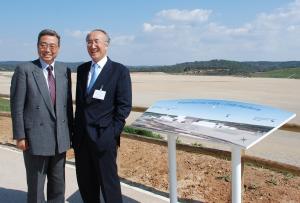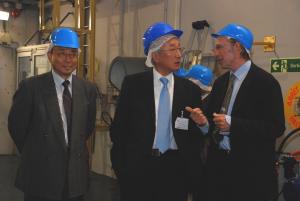IEA head calls for "revolution"
The International Energy Agency (IEA), not to be confused with the International Atomic Energy Agency (IAEA), acts as an energy policy advisor for the governments of its 28 member countries. It was established in the wake of the oil crisis of 1973-1974 to coordinate international action in times of oil supply emergencies.
While "energy security" remains at the core of the Agency's mission, its mandate now covers energy efficiency, climate protection and international collaboration in the field of energy technology. The IEA also publishes the yearly World Energy Outlook, a report that is often considered as the Bible of the world energy community.
On Friday 9 April, Nobuo Tanaka, Executive Director of the IEA, was the distinguished guest of this month's Inside ITER seminar—and "revolution" was the subject of his talk.
The revolution Nobuo Tanaka advocates is a peaceful, but nonetheless painful one. It is based on the "450 scenario"—in reference to the objective of bringing greenhouse gases in the atmosphere to 450 parts per million—and calls for drastic action to develop energy-efficient technologies that will mitigate climate change.
Based on "assumptions more than projections," the "revolutionary scenario" which Nobuo Tanaka detailed in his presentation has a cost: a huge incremental investment of $10.5 trillion by 2030.
Quite expensive ... but "the consequence of no action," the Executive Director of the IEA concluded, "would be disastrous."



